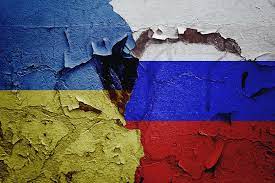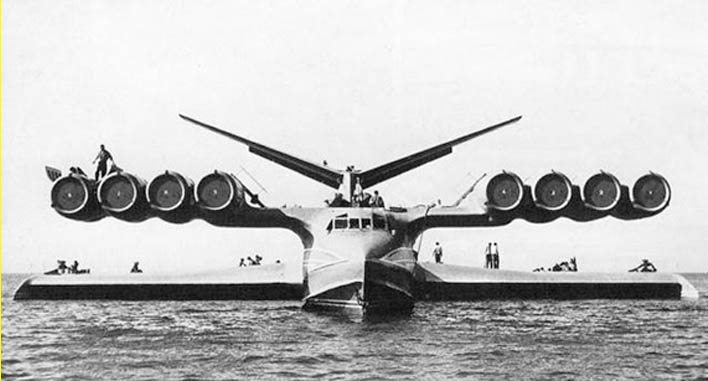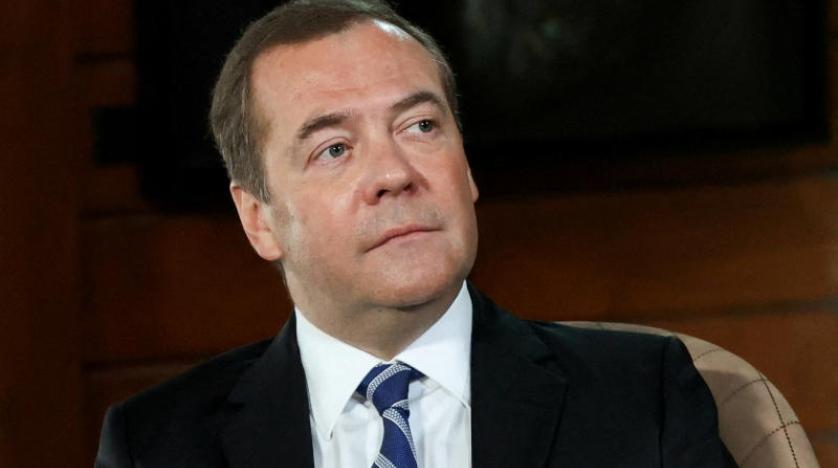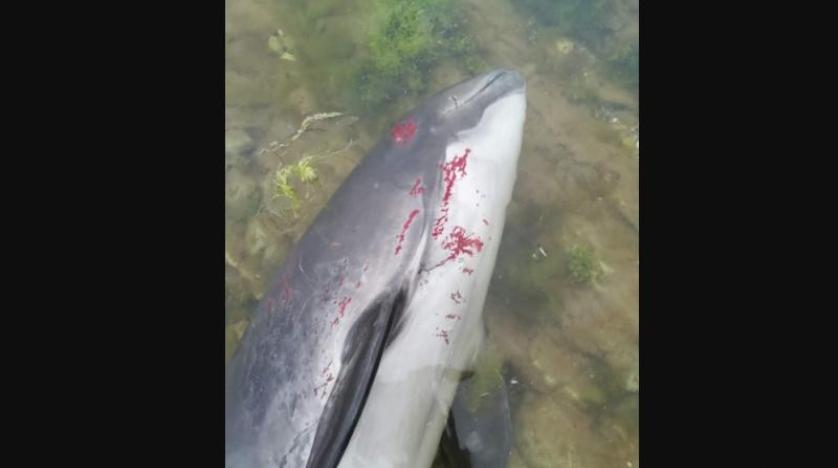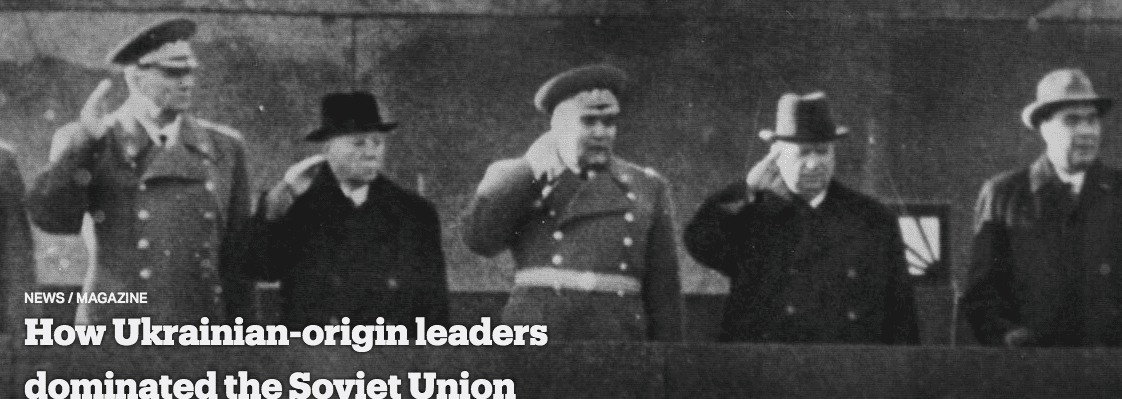Russia-Ukraine relations refer to relations between the Russian Federation and Ukraine. The two countries are currently waging the Russian-Ukrainian War, which began in 2014 after Russia annexed Crimea from Ukraine. The modern bilateral relationship between the Russian Federation and Ukraine officially began during World War I, when the former Russian Empire went through the process of political reform. In 1920, bilateral relations between the two countries changed with the invasion of Ukraine by the Russian and Polish Red Army. In the 1990s, bilateral relations revived immediately after the dissolution of the Soviet Union, of which both Soviet Russia and Soviet Ukraine were officially founding republics.
Relations between the two countries have been severely shattered since the 2014 Ukrainian revolution, followed by Russia’s annexation of Crimea from Ukraine and Russia’s support for separatist fighters of the Donetsk People’s Republic and luhansk People’s Republic in a war in early 2020, killing more than 13,000 people and imposing Western sanctions on Russia.
Historical development of Russia-Ukraine relations
Interactions between russia and the two regions of Ukraine developed on an official basis from the 17th century onwards, but relations at the international level ended when Katerina the Great liquidated the autonomy of the Kazakh Hetmanate in 1764. Shortly after the Communist October Revolution, the two states re-entered.
In 1920, Soviet Russian forces captured Ukraine, and relations between the two states moved from international relations to domestic relations in the Soviet Union, which was founded in 1922. Following the dissolution of the Soviet Union in 1991, Ukraine suffered periods of tensions and outright hostility from Russia. Prior to Yevromaydan (2013-2014), under Ukrainian President Viktor Yanukovich, he had been cooperating with various trade agreements (in office from February 2010 until his removal from power on February 22, 2014).
On March 1, 2014, the Federation Council of the Russian Federal Assembly unanimously allowed the Russian President to bring russian armed forces into Ukrainian territory. On March 3, 2014, Vitaly Çurkin, the Representative of the United Nations to Russia, showed a letter signed by former Ukrainian President Yanukovich to President Vladimir Putin of the Russian Federation requesting the entry of the Russian Armed Forces into Ukrainian territory.
During the February-March 2014 Crimea crisis, Ukraine lost control of government buildings, airports and military bases in Crimea to unspecified troops and local pro-Russian militias. This began on February 27th when unspecified gunmen seized the Crimean parliament building. On the same day, the Crimean parliament replaced the local government with someone who wanted Crimea to merge with Russia. This government held the 2014 referendum on Crimean status on March 14, 2014, when voters overwhelmingly voted to join Russia. On March 17, 2014, Crimea declared independence. On March 18, 2014, a treaty was signed in Moscow to add Crimea and Sevastopol to Russia.On March 19, 2014, all of Ukraine’s Armed Forces withdrew from Crimea.On April 17, 2014, President Putin stated that the Russian military supports the Separatist militias of Crimea, adding that Russian intervention was necessary “due to the appropriate conditions for the free expression of the will of the Crimean people.”
Throughout March and April 2014, pro-Russian unrest spread in Ukraine, with pro-Russian groups declaring “People’s Republics” in the oblasts in Donetsk and Luhansk, both of which remained partly out of the Control of the Ukrainian government as of 2017. In response, Ukraine launched numerous international court cases against Russia and suspended all military cooperation and military exports. Many countries and international organizations have imposed sanctions on the Russian Federation and ukrainian citizens who are involved in and responsible for the tensions.
Military clashes between pro-Russian rebels (supported by the Russian military) and the Ukrainian Armed Forces in eastern Ukraine began in April 2014. On September 5, 2014, the Ukrainian government and representatives of the self-proclaimed Donetsk People’s Republic and the Luhansk People’s Republic signed a temporary ceasefire. In January 2015, amid intense new fighting, the ceasefire effectively ended. A new ceasefire agreement has been in force since mid-February 2015, but it has also failed to stop the war. In January 2018, Verkhovna Rada adopted a law describing areas seized by the Donetsk People’s Republic and the Luhansk People’s Republic as “temporarily occupied by Russia,” which also called Russia an “aggressive” state. Russia is accused by NATO and Ukraine of conducting direct military operations to support the Donetsk People’s Republic and the Luhansk People’s Republic. Russia denies this, but in December 2015, Russian President Vladimir Putin acknowledged that Russian military intelligence officers were operating in Ukraine and insisted that they were not the same as regular soldiers. Russia has acknowledged that Russian “volunteers” are helping the separatist People’s Republics.
On February 10, 2015, in response to Russian military intervention, the Ukrainian parliament signed a draft decree suspending diplomatic relations with the Russian Federation. Although this suspension did not take place, Ukrainian official Dmitro Kuleba (Ukraine’s Permanent Representative to the Council of Europe) acknowledged in early April 2016 that diplomatic relations had fallen to “almost zero”. In late 2017, Ukrainian Foreign Minister Pavlo Klimkin stated that “there is no diplomatic relationship with Russia as content.”
On October 5, 2016, the Ukrainian Foreign Ministry officially advised its citizens to refrain from any travel to Russia or transit through their territory. The ministry cited a growing number of unjustified arrests of Ukrainian citizens, who russian law enforcement often allegedly “treated roughly by brutal methods such as illegal physical and psychological coercion, torture and other acts that violated human rights and dignity.”
In March 2014, Ukraine began banning the broadcasting of several Russian TV channels in Ukraine[34][35][36][a], followed by a february 2015 decision by law enforcement of the occupying state to ban the display of “audiovisual works” that included “popularization, incitement, propaganda” of any action by its weapons. A year later, Russian productions (on Ukrainian television) were reduced by 3 to 4 (times). In 2015, Ukraine began banning Russian artists from entering Ukraine and other Russian cultural artifacts in the country, seeing them as a “threat to national security.” From November 30th (following the Kerch Strait incident), Ukraine banned all Russian men between the ages of 16 and 60 from entering the country for humanitarian purposes, saying it was a security measure. In another response to the Kerch Strait incident, Ukraine launched a 30-day period of martial law that began on November 26th in 10 border regions of Ukraine. Martial law was imposed because Ukrainian President Petro Poroshenko claimed there was a threat of a “full-scale war” with Russia.
Russia has an embassy in Kiev and consulates in Kharkov, Lviv and Odessa. Ukraine has an embassy in Moscow and consulates in Rostov-na-Donu, Sankt-Peterburg, Yekaterinburg, Tyumen and Vladivostok. Ukraine recalled Russian Ambassador Volodimir Yelchenko in March 2014. Since then, Ukraine’s highest diplomatic mission in Russia has become its interim chief of security. Similarly, since July 2016, following the return of Mikhail Zurabov, Russia’s ambassador to Ukraine, Russia’s highest diplomatic mission in Ukraine has been its interim ambassador.
Kiev Russianness
Both Russia and Ukraine inherit from russia in the 10th century for joining several tribes and clans of various ethnicities and backgrounds under the Byzantine church. According to the Great Soviet Encyclopedia, as a political entity, the Russians suffered from feudal disintegration, and its history is full of numerous conflicts between various princes. According to former Russian historians, Kiev, the modern capital of Ukraine, was declared the mother of Russian cities thanks to the once powerful medieval state, the predecessor of both the Russian and Ukrainian nations. The phrase “mother of cities” is of Greek origin and means metropolis. Rhetoric about the origin of both Russians and Ukrainians can lead to heated debate.
Moscow and the Russian Empire
After the Mongol invasion of Kiev, the history of the Russian and Ukrainian people began to be separated. The Russians successfully combined all the ruins of the northern provinces, becoming, for the first time, a strong Russian state. The Ukrainian region came under the domination of the Grand Duchy of Lithuania, followed by the Polish-Lithuanian Union. Within the union, the militant Zaporojya Cossacks rejected polonation and frequently clashed with the unity government controlled by Polish nobles. Unrest among cossacks led them to rebel against the Polish-Lithuanian Union and eventually formalize it with the Pereyaslav Treaty of 1654, seeking unity with Russia, which has common cultural, linguistic and religious denominators. From the middle of the 17th century, Ukraine was gradually absorbed by the Russian Empire and completed with the partition of Poland in the late 18th century. Soon after, in the late 18th century, the Kazakh army was forcibly disbanded by the Empire, and most of the Kazakh population moved to the Kuban region at the southern tip of the Russian Empire to fight angry Caucasian tribes, thinking that it would play a valuable role in subjugating the Empire.
The Russian Empire saw Ukrainians (and Belarusians) as part of Russian identity and called them “Little Russians”. Until the end of World War I, this view was opposed by a small ukrainian nationalist group. However, the perceived threat of “Ukrainian separatism” has triggered a series of measures aimed at russianizing the “Little Russians”. In 1804, the Ukrainian language was banned in schools as a language of instruction and instruction. In 1876, aleksandr II’s secret Ems Ukaz decree banned ukrainian books, banned the publication and importation of public performances and conferences, and even banned the publication of Ukrainian texts accompanying musical notes.
Soviet Union
The February Revolution witnessed the establishment of formal relations between the Provisional Government of Russia and the Central Council of Ukraine, represented by commissioner Petro Stebnitski in the Russian government. At the same time, Dmitri Odinets was appointed representative of Russian Affairs in the Ukrainian government. After the Soviet military offensive in early 1918, Ukraine declared full independence from the Republic of Russia. Two Brest-Litovsk agreements signed separately by Ukraine and Russia with the Alliance Forces calmed the military conflict between them and peace talks began in the same year.
After the end of World War I, Ukraine became a battlefield in the Russian Civil War, and both Russians and Ukrainians fought according to their political beliefs in almost all armies. In 1922, Ukraine and Russia were two founding members of the Soviet Union and signatories to the treaty that dissolved the union in December 1991.
The end of the Russian Empire also lifted the ban on Ukrainian. This was followed by a period of birth that supported the cultures of different Soviet Republics.
In 1932-1933, Ukraine experienced the Holodomor, a human-caused famine that killed 7.5 million Ukrainians in the Soviet Socialist Republic of Ukraine. During the famine, also known as “Terrorism-Famine in Ukraine” and “Famine-Genocide in Ukraine”, millions of Ukrainian USSR citizens, mostly Ukrainians, starved to death in a peacetime disaster never seen before in Ukrainian history. Scientists disagree on how long before natural factors and poor economic policies were seen as the causes of famine and how premeditated the soviet leadership was designed to destroy Ukrainian peasantry. The Holodomor famine spread to many Soviet republics, including Russia and Kazakhstan. Scientists also made the argument that the Holodomor was ultimately the result of related economic problems, as well as the liquidation of private property and radical economic changes implemented during the Soviet industrialization period, combined with the widespread drought of the early 1930s. On January 13, 2010, after his death, the Kiev Court of Appeal found Stalin, Kaganovic, Molotov and Ukrainian Soviet leaders Kosior and Chubar guilty of genocide against Ukrainians during the Holodomor famine.

